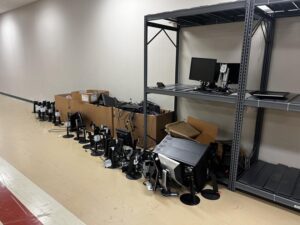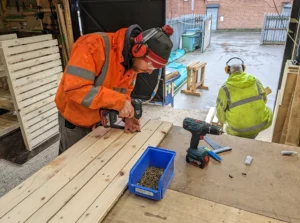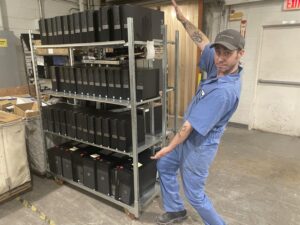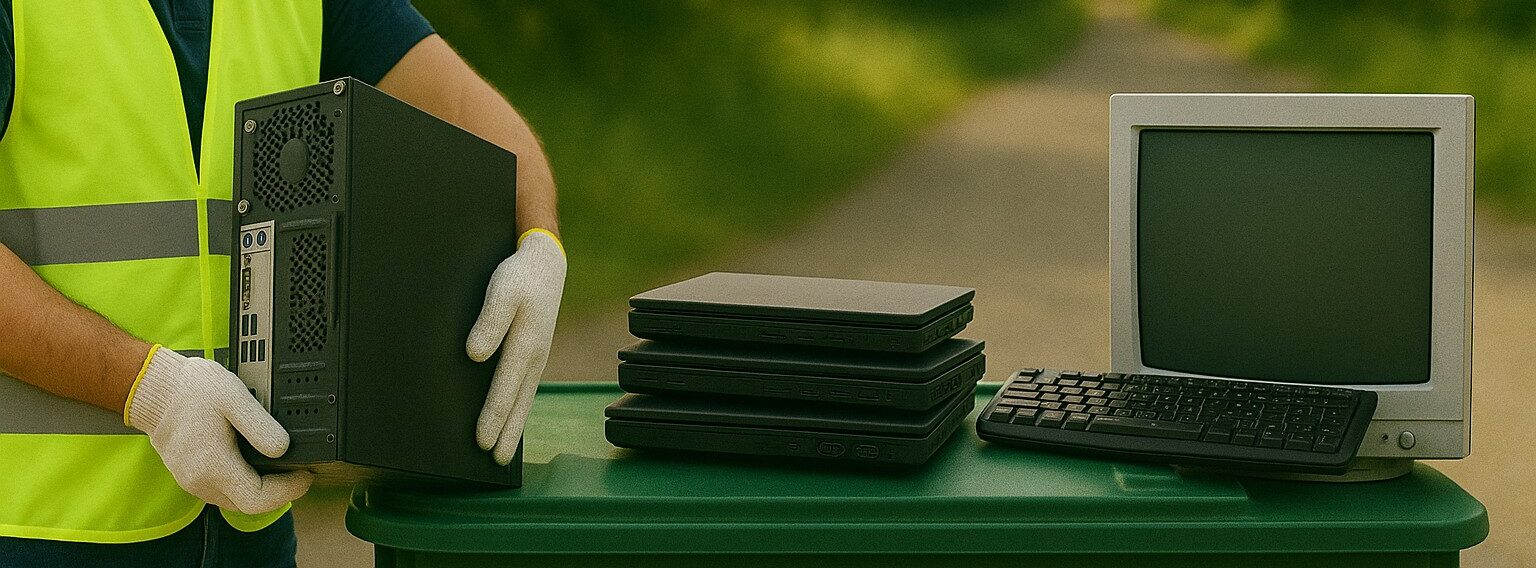
REDUCE, REUSE, RECYCLE MOVEMENT
Every movement has its slogan, its mantra, and in the ever-green world of sustainability, it’s no different: Reduce, reuse, recycle. Forming the backbone of responsible waste management and environmental preservation, these three actions are worthy of a closer look. In today’s blog, then, we’ll explore the 7 best reduce, reuse, recycle examples, and showcase practical ways to implement these principles in everyday life.
Let’s take a look!
1. Recycling Electronics
Topping our list at number one is the critical practice of recycling your electronics. As mentioned in previous blogs, electronic waste (e-waste) has become a pressing global issue. Laptops, smartphones, tablets, computers—these devices along with other gadgets often end up in landfills, posing detrimental environmental risks due to their toxic materials.
With an eye to reclaiming value and recirculating end-of-life devices, recycling electronics is the responsible way to dispose of your equipment, whether you’re a business, local community, or homeowner looking to free up some space. Through specialized processes, these materials can then be reused to manufacture new devices, or reintroduced into the market, thereby significantly reducing the demand for raw materials and minimizing the environmental impact of e-waste. Quite simply, you can’t go wrong.
2. Embracing Secondhand Shopping

BEFORE HIPSTERS MADE IT COOL…
Before hipsters made it cool (still a thing?), environmentalists were at the forefront. That’s why secondhand shopping comes in at number two on our Best 7 Reduce, Reuse, Recycle Examples list. Secondhand shopping, whether at thrift stores, garage sales, or online marketplaces, is a wonderful way to extend the lifecycle of items. Clothing, books, furniture, and electronics find new homes, avoiding the need for producing new goods. Not only does it get you out of the house, but this practice reduces waste in addition to supporting the principles of a circular economy by giving existing products, like spiritual teachers of old, a new lease on life.
3. Repurposing Clothing: Fashionable Sustainability
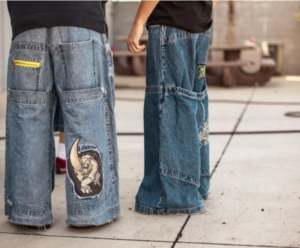
BRING ‘EM BACK!
The fashion industry is coming into its own when it comes to sustainability. For years, fashion has fueled a throwaway culture, but recently an uptick in trends indicates it’s leaning more and more towards repurposing and upcycling clothing. Instead of throwing away old garments, individuals and businesses are creatively reusing materials and transforming them into new, chic and stylish pieces. Whether it’s turning an old pair of JNCO jeans (you know you rocked these in the 90s, stop playing) into fashionable bags or revamping vintage clothes, this practice significantly reduces textile waste and makes you look pretty damn good while you’re at it.
4. Composting: Transforming Kitchen Waste
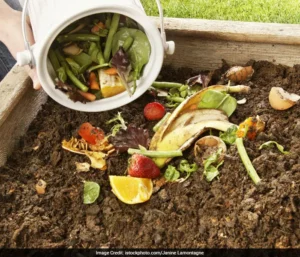
HOUSEHOLD WASTE INTO COMPOST
You can’t sleep on a classic—whether it’s a bacon double cheeseburger, Chopin, or good ol’ fashioned composting. Standing as a classic example of reducing and reusing organic waste, transforming your kitchen waste into nutritinoally-dense compost is the way to go. Kitchen scraps, yard trimmings, and other biodegradable materials are turned into nutrient-rich compost through decomposition. Not only does it provide a natural fertilizer for gardens and agriculture, but it’s a sustainable cycle where waste is diverted and transformed into a valuable resource. As such, this one comes in at number four.
5. Reusable Bags and Containers
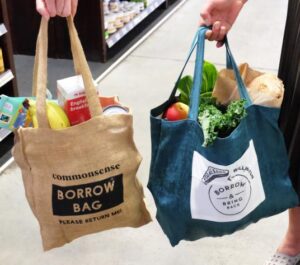
REUSABLE BAGS MAKE A DIFFERENCE
It’s always a heartbreaking tragedy to see wildlife literally caught up in a six-pack plastic ring. As such, a small change like the use of reusable bags and containers has a tremendous effect on our ecosystem, as well as contributing effectively to waste reduction. Carrying reusable shopping bags, for example, or water bottles and containers reduces the need for single-use plastics and paper, preventing these items from clogging landfills and oceans.
6. Water Conservation and Reuse
When I was young, I remember the Ninja Turtles doing a PSA for water conservation, and lo and behold, it worked. It may seem trite but it has stayed with me all these years: turn the water off when you brush your teeth. Conserving water and reusing it whenever possible is a critical yet often overlooked aspect of the reduce, reuse, recycle paradigm. Simply collecting rainwater, for example, for gardening, or fixing leaky faucets, or as the Ninja Turtles advised, turning the water off while you brush your teeth, significantly reduces water wastage and contributes to a more sustainable use of this precious resource.
7. Reclaiming Wood
The Brits are doing it, and we should be doing it, too. Reclaiming wood involves salvaging timber from old structures and reducing the demand for fresh logging. This lessens the environmental impact of new material production. Reclaiming wood not only showcases the character and history embedded within aged wood but also helps in reducing deforestation, minimizing the carbon footprint associated with new material creation. Rapidly becoming a favorite in the construction industry (see our Best 7 Circular Economy Examples), its use in construction and design not only promotes sustainability but also encourages a shift towards eco-conscious practices, setting a positive, enduring example for the industry.
Final Thoughts
Our list isn’t meant to be exhaustive, but aims to serve as a helpful source from which to draw one of many reduce, reuse, recycle examples. Hopefully, this list of seven will show how we can integrate the principles of reduce, reuse, and recycle into various aspects of our lives, from fashion to technology to household items. Each practice contributes to the larger goal of environmental preservation, resource efficiency, and a more eco-friendly future.
It’s important to remember that power can effect change. When applied towards a positive end, and by embracing these practices, you help bring about a cultural shift that will value resourcefulness, environmental consciousness, thriftiness and sustainable living.
And best of all, you can start today by giving us a call and discovering how eAsset Solutions can help you help all of us make a difference. Call today!

